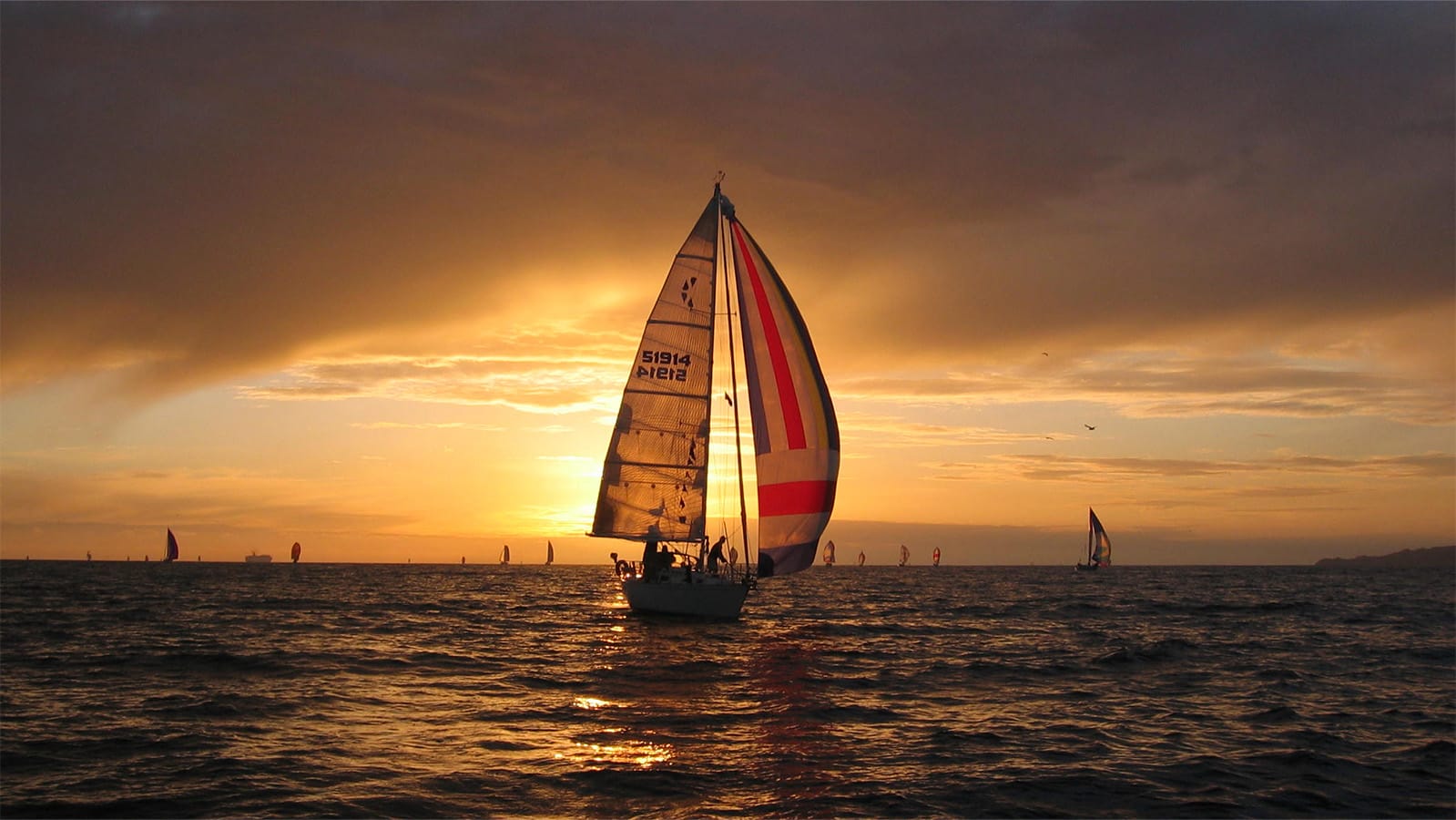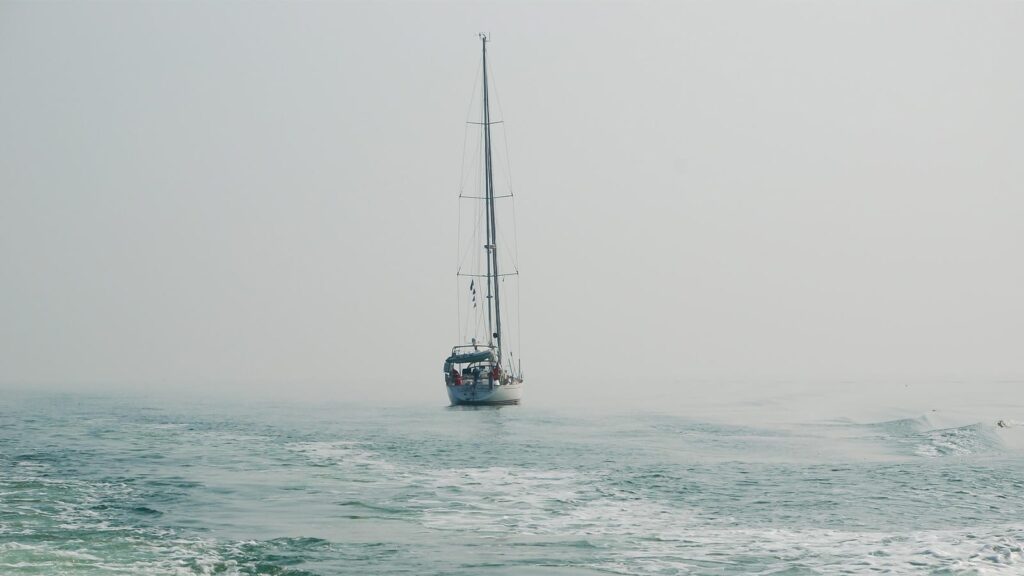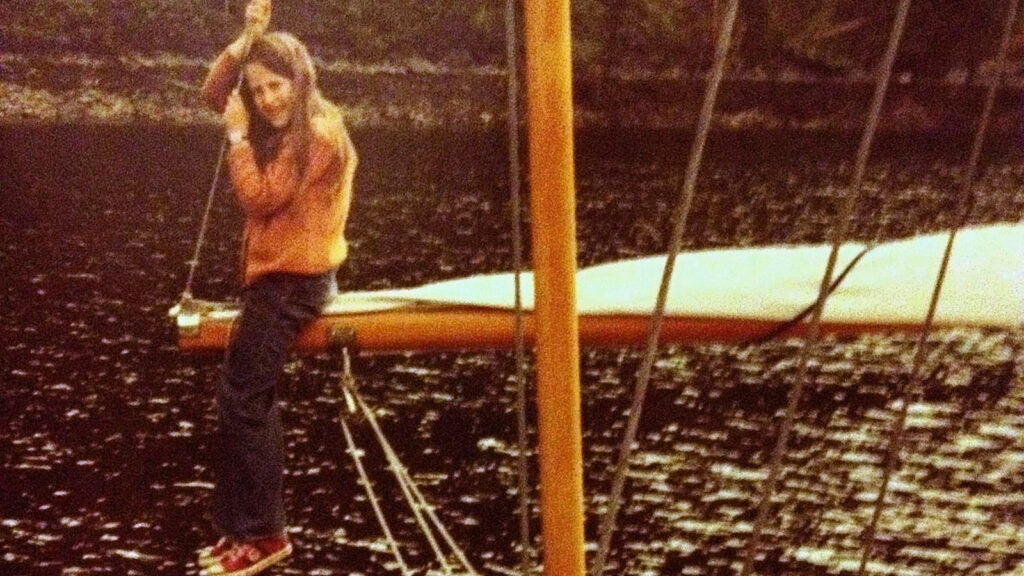By Bruce S. Liese
Estimated reading time: 7 minutes
Table of contents
A Perfect Sailing Day
Let’s face it, sailing is a joy, the kind of joy you feel compelled to share.
You’re the proud owner of your first sailing vessel, Blowin’ in the Wind (affectionately nicknamed Blowin’). After falling in love with sailing and taking several ASA courses, you decided it was time to buy your own boat.
This is the big day. You’ve chosen perfect conditions to take a few friends and family members sailing. The sun is shining, the temperature hovers at 70°F, and the wind is blowing a gentle 12 knots. Ice-cold beverages fill the cooler, gourmet snacks are stowed in a canvas bag, and the cockpit is ready for laughter and good company.
It’s been about six months since you passed ASA 101, and your confidence has grown. You’ve practiced single-handing Blowin’, you know the points of sail, and you’re trimming sails with ease. Today, you’ve decided to sail single-handed so your guests can sit back and enjoy the ride.
At first, it works beautifully. Your passengers are impressed. They marvel at how fast the boat moves … and how quietly. Compliments fly, snacks are opened, drinks are poured, and everyone is merry.
Teaching Moments on the Water
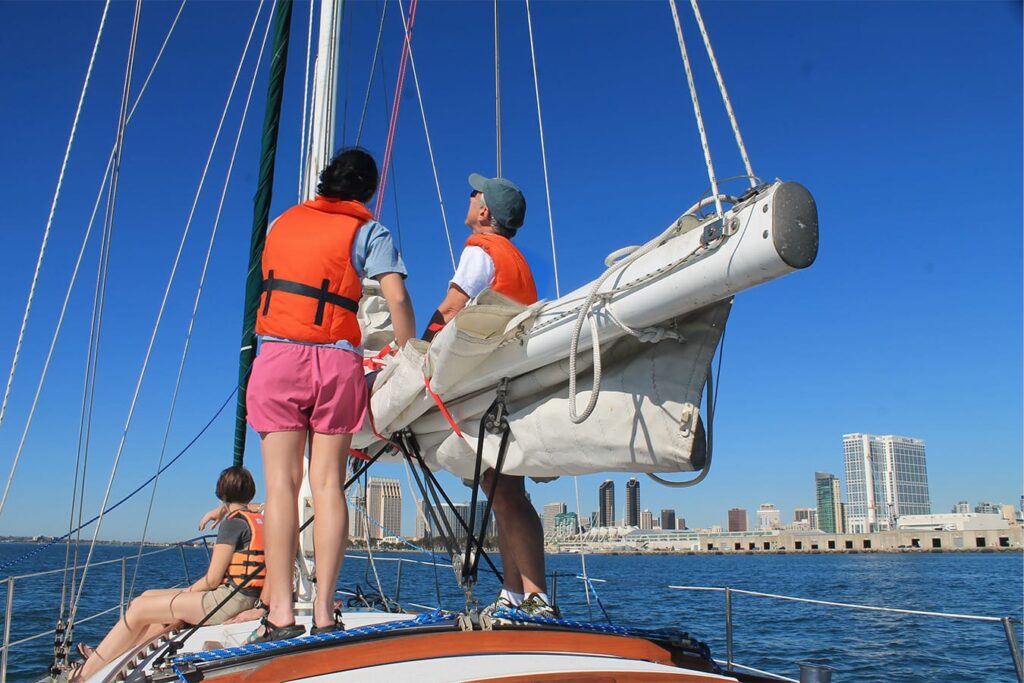
A perfect day on the water. Calm wind, open sky, and a crew eager to learn. Don’t hog the helm!
Your guests are curious. They don’t just want to watch; they want to know how things work.
You field questions with quick, simple answers:
- “Those are winches; they help adjust the jib.”
- “That’s the traveler; it fine-tunes the mainsail.”
- “This is the tiller. Bigger boats usually have a wheel, but both steer the rudder under the boat.”
You explain tacking and jibing, and you remind everyone to watch for the boom. Your crew nods, asks more, and seems fascinated.
When Something’s Missing
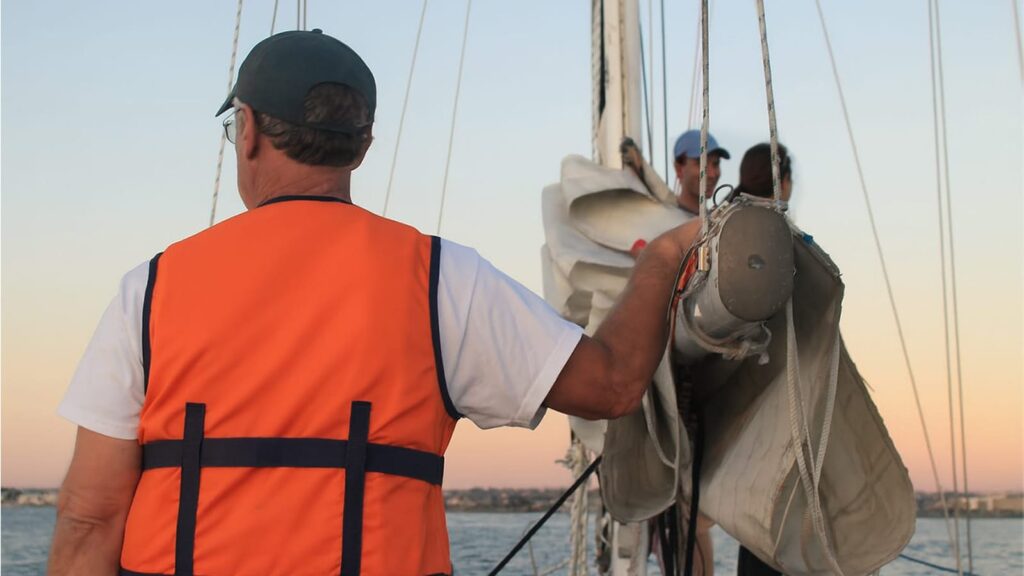
Leadership on the water means trusting others to learn by doing.
An hour passes. The chatter shifts to jobs, kids, and current events. Snacks sit half-eaten, drinks are slowly sipped. No one is bored, but the energy has shifted.
What’s missing?
Your hunch: they’ve stopped paying attention to the boat, the sails, the perfect wind, and – maybe saddest of all – your carefully honed skills. They’ll leave remembering a pleasant day, but something more was possible.
The difference? Involvement.
The Million-Dollar Question
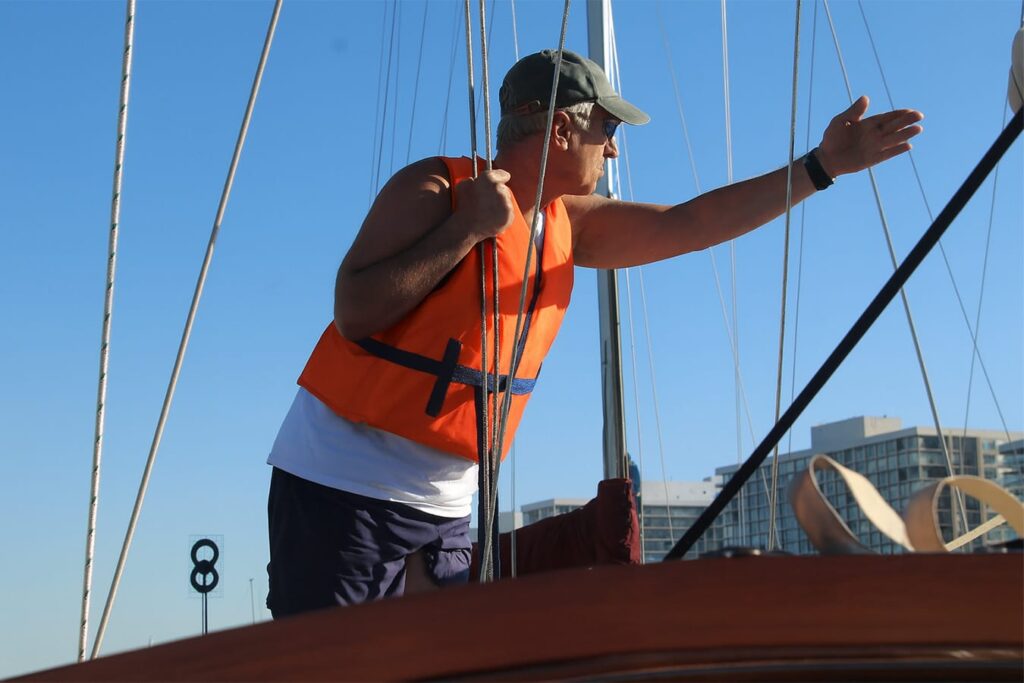
How could you have turned observers into sailors?
It starts before you even leave the dock. Ask questions:
- “Have you sailed before?”
- “What was your experience like?”
- “Would you like to learn some skills today?”
Then, once you’re safely underway, invite them in.
The million-dollar answer: Don’t hog the helm. Invite your guests to steer, trim, or simply try a task with your guidance. Involvement turns a good day on the water into an unforgettable one.
How to Involve Your Guests
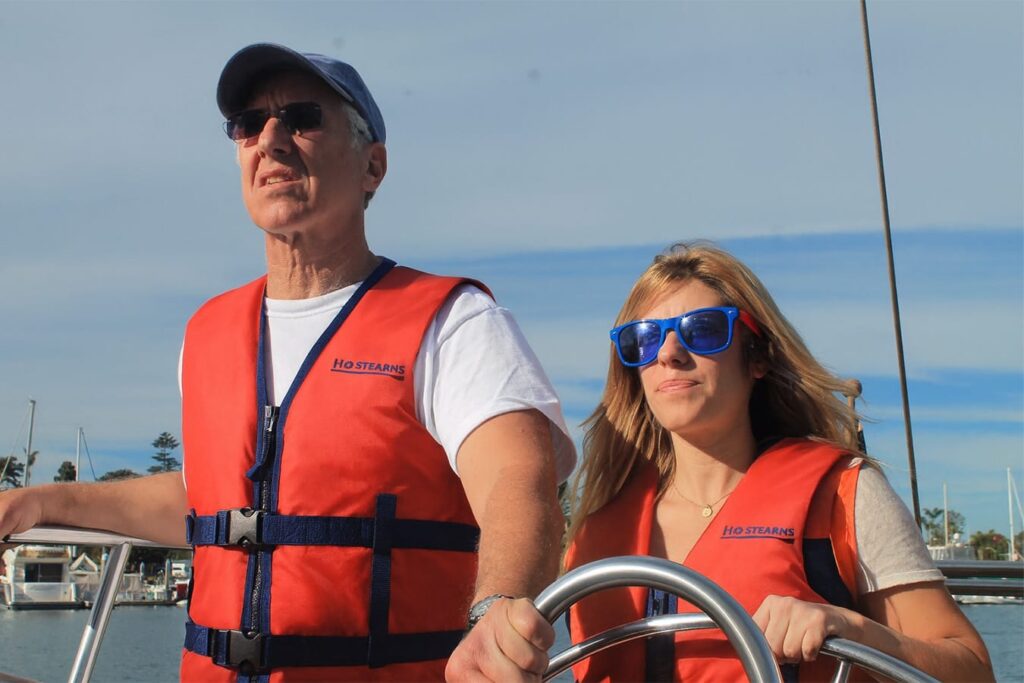
Sharing the helm makes every sail more meaningful. Confidence grows when guests take the wheel.
When conditions are safe, encourage your guests to try:
- Steering the boat
- Trimming the jib or main sheets
- Learning small maneuvers
Remember, some will prefer to relax. That’s fine. Involvement should be an invitation, never an obligation.
Ask directly: “Who wants to drive?” “Who wants to handle this line?” Reassure them you’ll stay right beside them. Introduce responsibilities one at a time, making sure each person is comfortable before moving on.
Be a coach. Correct gently, explain why adjustments matter, and celebrate successes.
Coaching with Patience
New sailors will make mistakes. They’ll push the tiller the wrong way, oversteer the wheel, or stare blankly at sailing terms.
This is where your role is most important: stay calm and patient. If you’re the coolest, most relaxed person on the boat, your guests will enjoy themselves, mistakes and all.
The more fun they have learning, the more likely they’ll want to sail with you again.
The Bottom Line
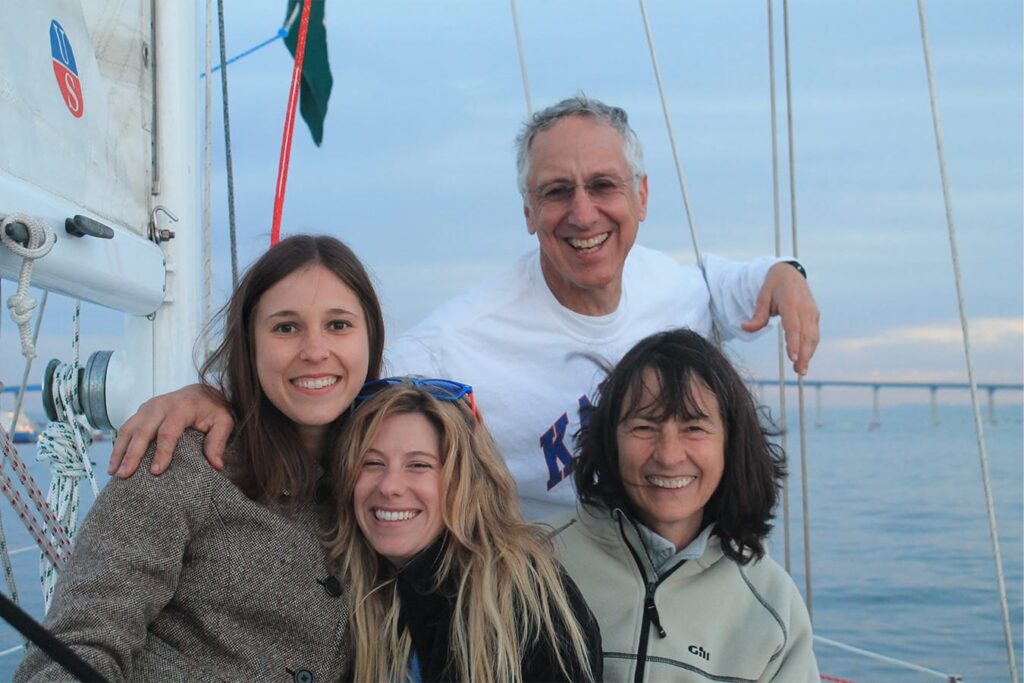
Sailing is best when shared. Involve friends and family to turn a simple outing into lasting memories.
Engage your guests in the sailing itself. A day on the water can transform from “nice outing” to “unforgettable experience” when they’re trusted to take the helm, trim a sail, or feel the boat respond to their own hands.
You might even inspire a few to pursue sailing on their own. Before long, you’ll have friends and family eager to meet you at the marina for a casual “Friends and Family Regatta.”
About the Author
Bruce S. Liese has been a sailor his whole life and is a lifetime ASA member. He founded two ASA sailing schools and was honored multiple times as ASA “Instructor of the Year.” Though now retired from his 100-ton captain’s license due to vision issues, he remains deeply connected to the sailing community at 69 years old, always eager to share the joy of sailing with others.ills, consider taking a dedicated course with a reputable sailing school.
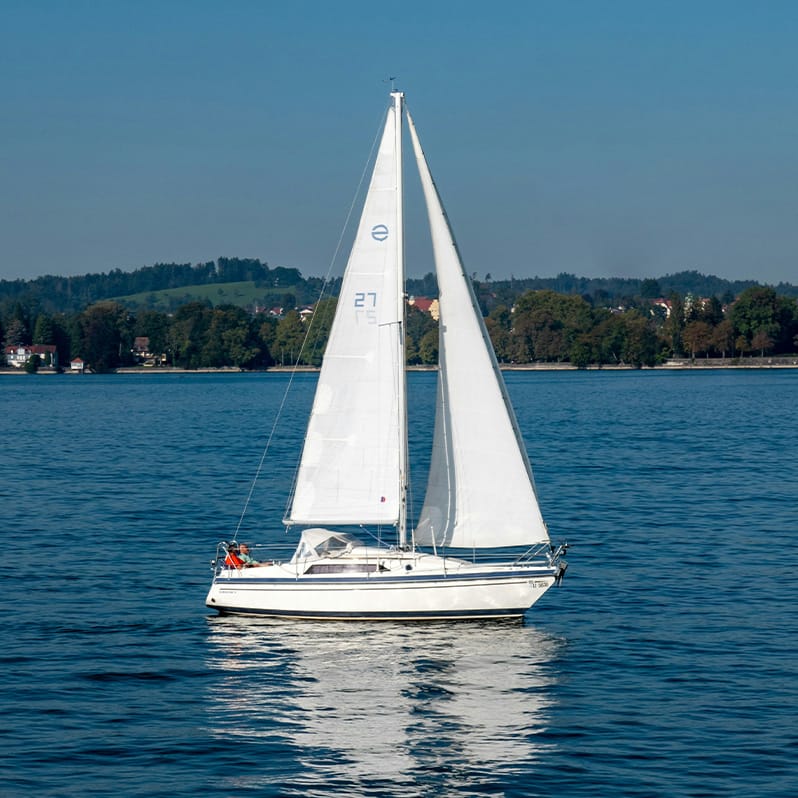
Join The Discussion
-
How do you balance control teaching leadership and micromanaging onboard?
Posted by American Sailing on October 7, 2025 at 7:12 pmBruce Liese writes about the importance of letting guests take part in sailing rather than doing everything yourself. How do you balance being in control as skipper with giving others the chance to learn and make mistakes? Where’s the line between good leadership and micromanaging on a sailboat?
Read Bruce’s Article here:
https://americansailing.com/articles/dont-hog-the-helm/americansailing.com
Sharing the helm turns passengers into sailors. Engage your guests, teach with patience, and make every sailing day unforgettable.
Howard replied 1 week, 2 days ago 2 Members · 1 Reply -
1 Reply
-
 43
43
 Bronze
Bronze
 New Sailor
New Sailor
Great article Bruce. I both teach ASA courses and handle charters at our club. I love when young kids are onboard as they take the most interest in the operation of the boat. I put them at the wheel first chance and teach some rudimentary skills. Most of the kids can’t get enough of it while the adults usually prefer to kick back and enjoy the view.
So yes, getting the crew involved is one of the best way to have a great time sailing.
Log in to reply.

